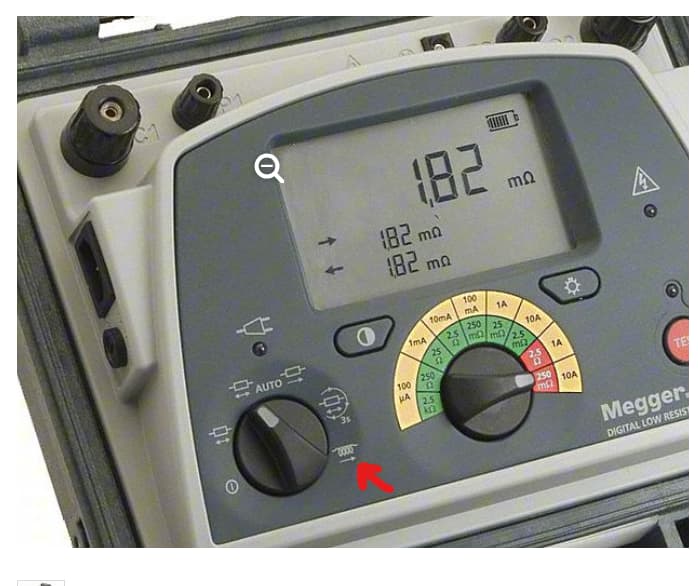Has anyone tried to find winding resistance with a Megger DLRO10HD on a 1000KVA XFMR with any success. We tried today and it was almost as if the ductor cut off because it just didn’t have the capacity, but an AEMC will do it. Any info greatly appreciated.
Did you adjust the scale down? Use the coil setting. It works better when you use leads with clamps, this way you can’t slip.
I have noticed that the two DLRO10HD’s i have had both have issues with the batteries and the 10 amp setting goes out and eventually the rest of the settings go out and you have to replace the battery to fix it…then the cycle repeats. I have done windings a couple times and once this issue begins with mine it just wont read windings well.
Winding capacitance charging may not give accurate measurements because DLRO takes instant readings.
It will also quickly consume the DLRO battery.
It is better to use MEGGER MTO or OMICRON CPC100; when you take the reading, you need to wait until the measurement deviation is reduced (becomes stable)
And after taking the measurements, there’s time to discharge.
As mentioned previously, you need a ductor designed to take winding resistance or inductive measurements. The small DLRO’s from
megger aren’t designed for this type of measurement, they read the resistance of an instant or one shot burst of current. A Sonel mmr650/6700, AEMC 6240, or equivalent will have an inductor measurement setting. The test set needs to saturate or charge the coil (to an extent), for resistance values to come into balance, meaning the output needs to be steady until the resistance value equalizes. Careful not to use too high of a current though, the rule is no more than 10% rated winding current. The Sonel sets measure in both directions (DC test) to get a more accurate reading. Hope this helps!
Thanks everyone for the info. It definitley seemed like it wasn’t charging the winding like the AEMC 6240 does.
As mentioned above, A DLRO is not designed to perform measurements on highly inductive loads, such as transformer windings. Another aspect not mentioned, is that a 10A DLRO typically lacks a proper discharge circuit. Even if a DLRO does have a discharge circuit, it is typically not adequate for many transformers. Because it is an inductive load, it will remain charged and arc when the leads are removed. It is also not recommended to use spring load probes for this measurement because they can become disconnected during the measurement and cause arcing to occur. This can damage the test set, the asset under test or the tech performing the measurement. This is why there are instruments specifically designed for winding resistance measurements and the appropriate test leads should be used.

